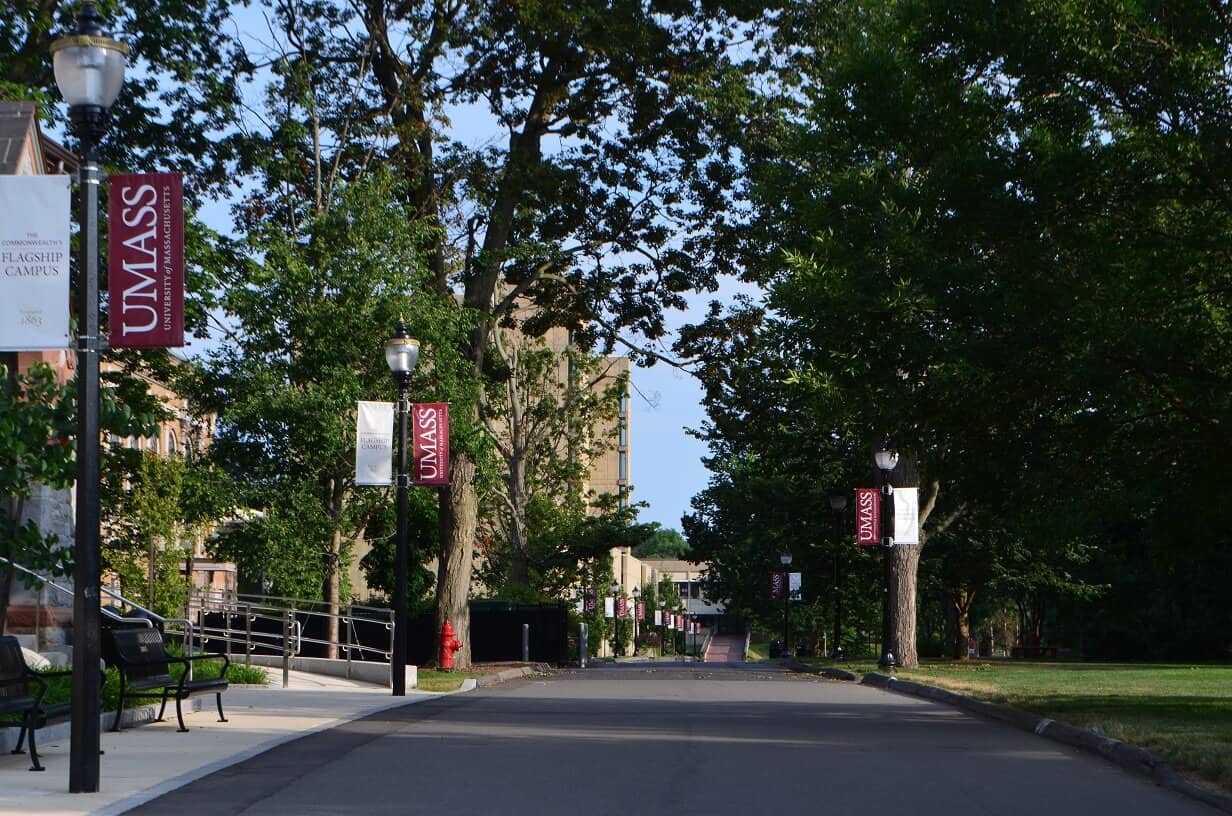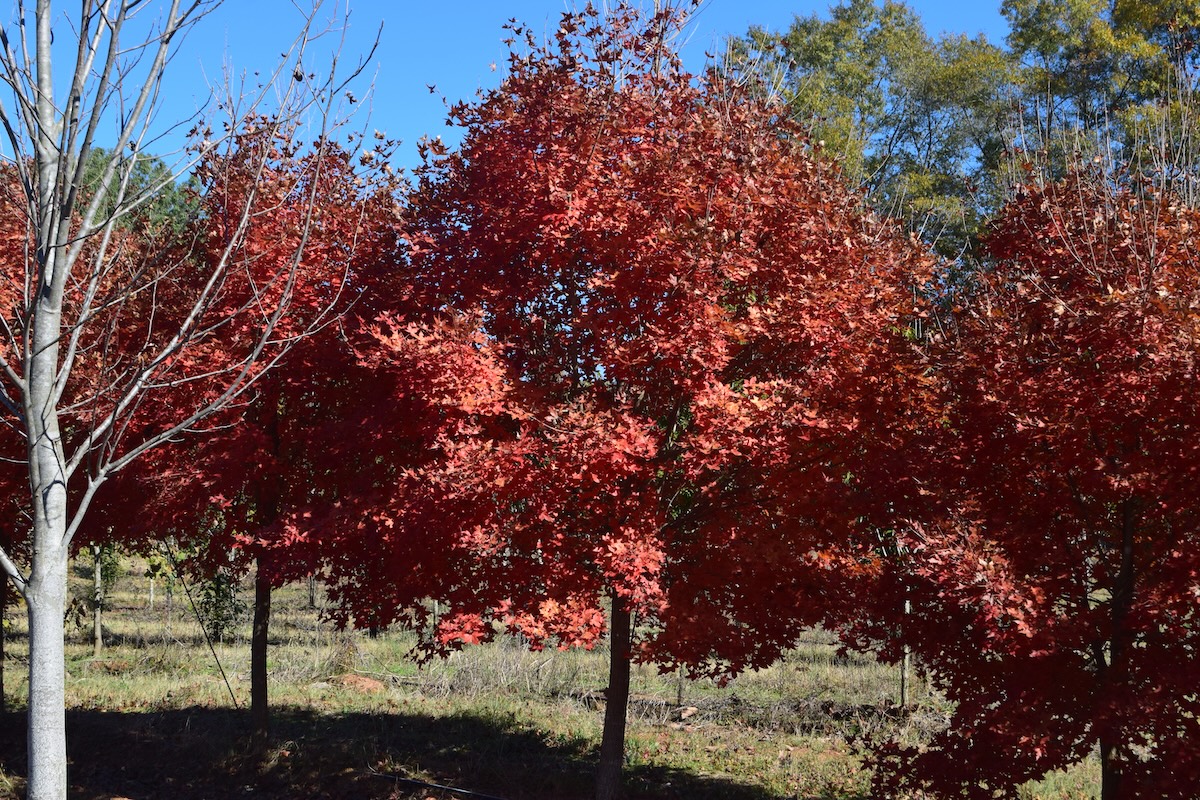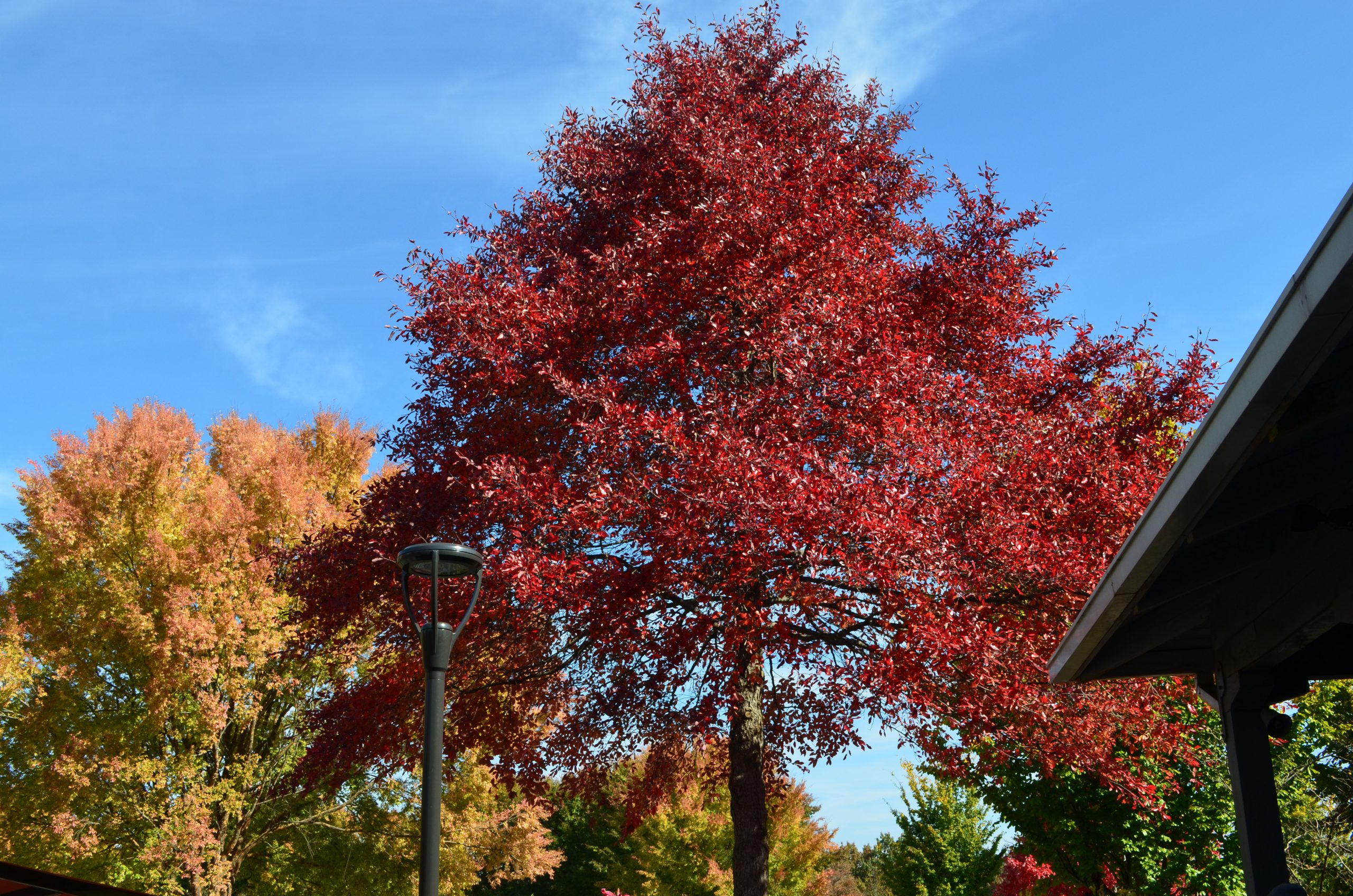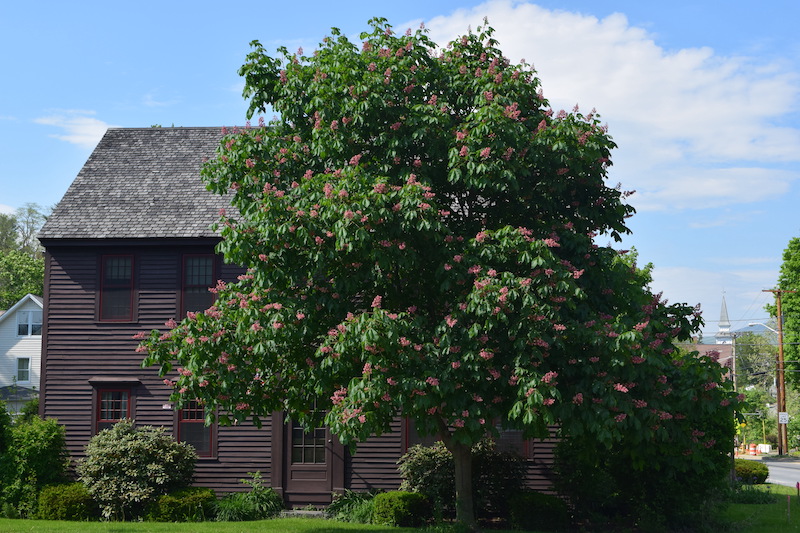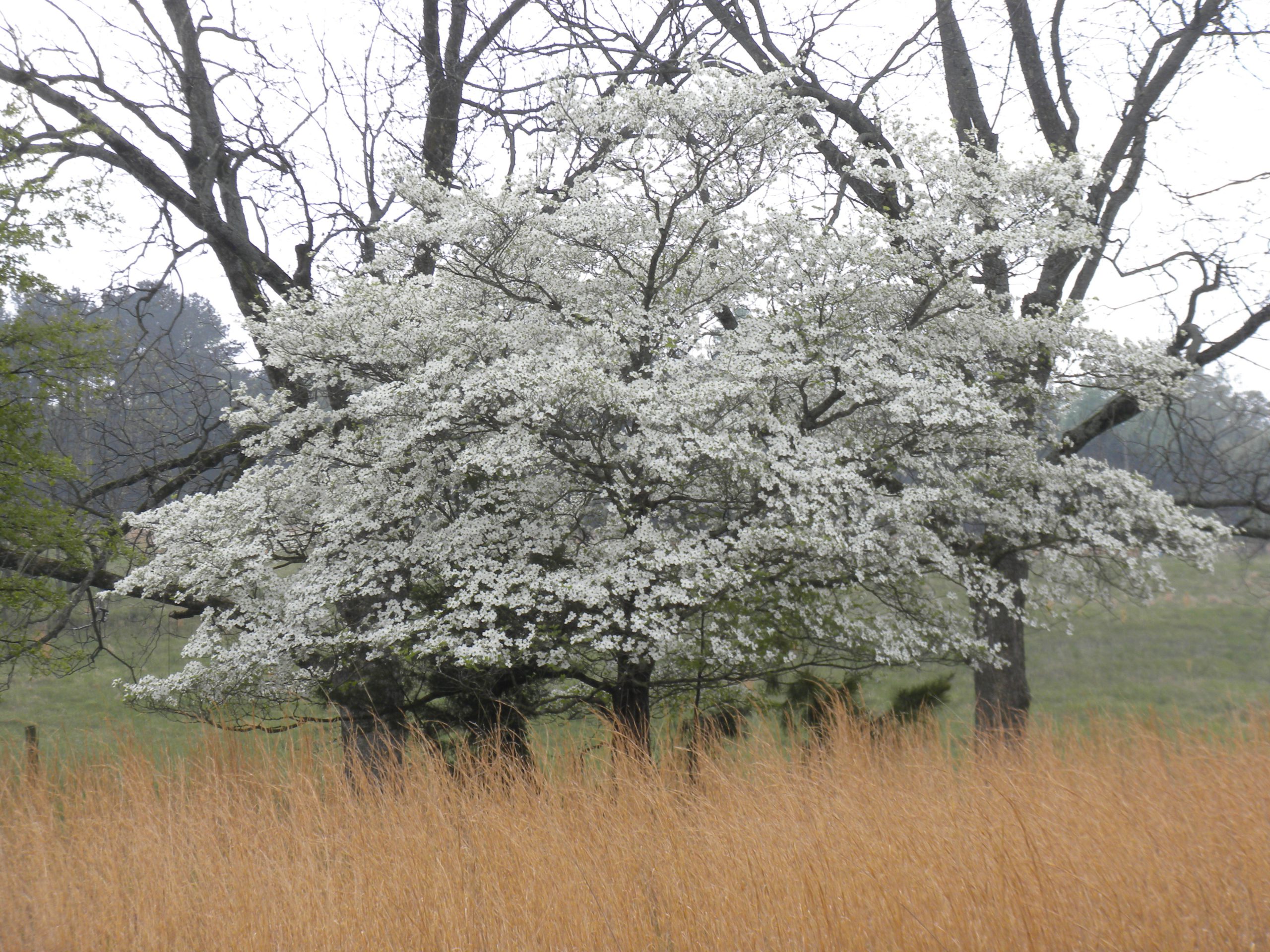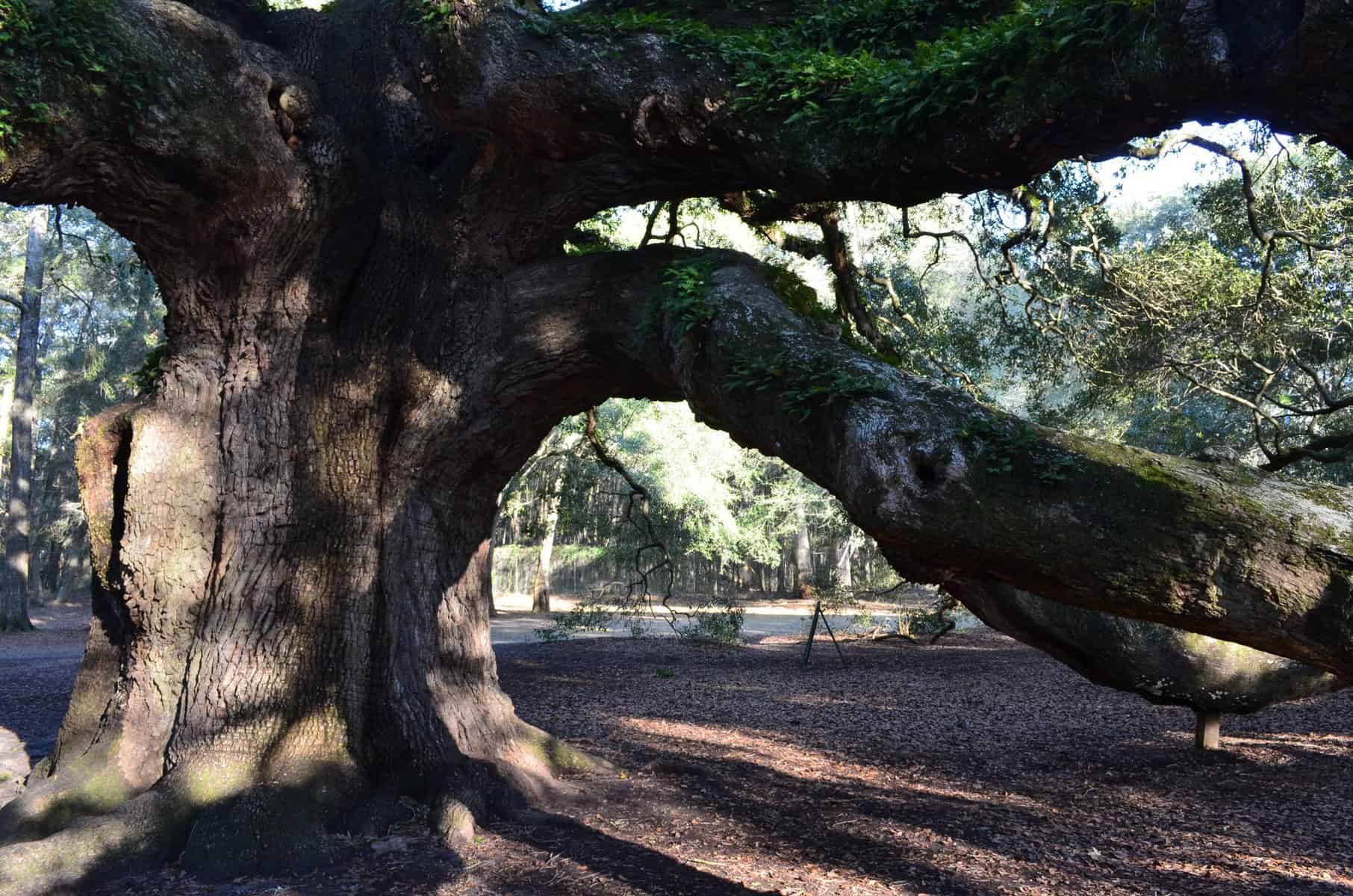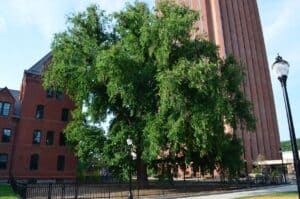
Ulmus japonica - University of Massachusetts
A December, 2017 visit to Amherst, MA to enjoy a Georgia-University of Massachusetts (UMass) basketball game brought back fond memories of my graduate student days (Ph.D., 1972). UMass was founded in 1863 as the Massachusetts Agricultural College and is now a major research university with ~1,300 faculty and 29,000 students. It is the largest public university in New England. On the Saturday morning of the game, 8 degrees F, lingering snow, I walked campus, revisiting old haunts and admiring long-remembered trees. Difficult to reconcile that 48 years had passed since I started my studies. Old friends, Ulmus japonica, Ulmus americana (a survivor tree but now treated for DED, 80’ by 75’, 49” DBH), Quercus acutissima (largest I know, 51’ by 80’, 31”DBH), Quercus bicolor (state champion, 91’ by 98’, 61” DBH), numerous Cercidiphyllum japonicum (the largest from which I grew many seedlings), Nyssa sylvatica (immense, wide-spreading tree on central campus; magnificent 75’ high specimen in the Chancellor’s garden), Phellodendron amurense (60’ by 40’, 24” DBH), ad infinitum, nodded in tacit approval as I walked by. All healthy, resolutely rigid, strong, noble stalwarts anchoring me to the campus more so than buildings. I try to forget the chemistry building (easy); the trees, however, are forever embossed/imprinted/ingrained. I could find them in the dead of night; perhaps the reciprocal.
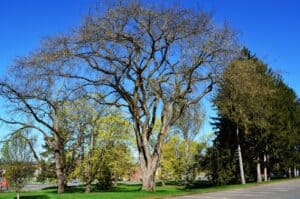
Ulmus americana University of Massachusetts
Todd Cournoyer, head of grounds, and I met five years past when I consulted and provided ideas about new planting strategies. The Waugh Arboretum (established 1944) is embedded/woven into the fabric of the campus with trees mapped and labeled. Signage throughout campus extolls the benefits of trees. On a huge pin oak, a sign lists the tree’s dollar value, carbon sequestered, storm water intercepted, and kilowatt hours of electricity saved per year (see scholarworks.umass.edu/sustainableumass_data/1 for a great map of all the trees on campus. This was crafted by Todd Beals, a UMass student. Incredible resource!). I recommended an expanded collection of Quercus since they are long-lived; a proven fact on the campus. Todd was able to secure ~15 oak taxa in 2016 and continues to plant them. It was gratifying to walk this area and witness the next generation of noble trees. Included in the oak plantings were Beacon™ and American Dream®, new Q. bicolor introductions.
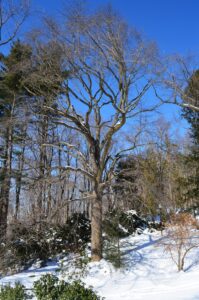
Nyssa sylvatica University of Massachusetts
Every campus has several noble, perhaps one-of-a-kind trees. The Ulmus japonica, a seedling transported from Hokkaido, Japan, by the third president, William S. Clark, was planted in 1890. This represents the first introduction to the U. S., is the largest in the country, 92’ by 73’, 52” DBH, and still unrivaled (see photo). The tree survived Dutch elm disease, construction and student traffic and never flinched. Always stopped to admire the tree on my way to classes and in February, 2011, collected scions. Grafted on Ulmus pumila with 80% success. Such a heritage tree, I thought, needed to be perpetuated. Four trees were sent to UMass with an April, 2017 dedicatory planting in memory of the revered Professor Gordon King, who taught plant materials to generations of students. One was added to the Dirr garden in 2013 from a 3-gallon container, now 20’ high, akin to American elm in outline (see photo).
Todd and I sent scion wood of other heritage/noble trees, including the Chancellor’s Nyssa sylvatica, to Schmidt Nursery, Boring, OR, for evaluation. The parent 84-year-old tree is 75’ by 80’, with a 37” DBH, and massive, sinuous branches. Foliage is lustrous dark green and fall color, as I photographed it, was orange. Todd reported variable from year to year, yellow, orange to red. In August, 2017, budded trees were 6 to 8’ high in the nursery row, with uniformly spaced, upswept branches. (see photo). Nyssa sylvatica is second only to Acer species at Schmidt’s in terms of numbers of large trees under evaluation.
Also from UMass is a magnificent Ulmus americana (size mentioned previously), that I admire and photograph during my visits (see photo). It is a survivor tree, now preserved by treatment. This vase-shaped, semi-pendent, artistic specimen embodies all the architecture and artistry of the prototypical noble American elm. It is the last American elm on the UMass campus.
Walk any campus and the trees will greet you. No charge to enjoy and be inspired. Many colleges and universities have arboreta designations with labeled trees and a location map.

